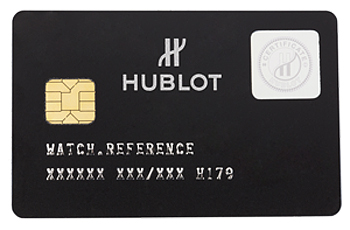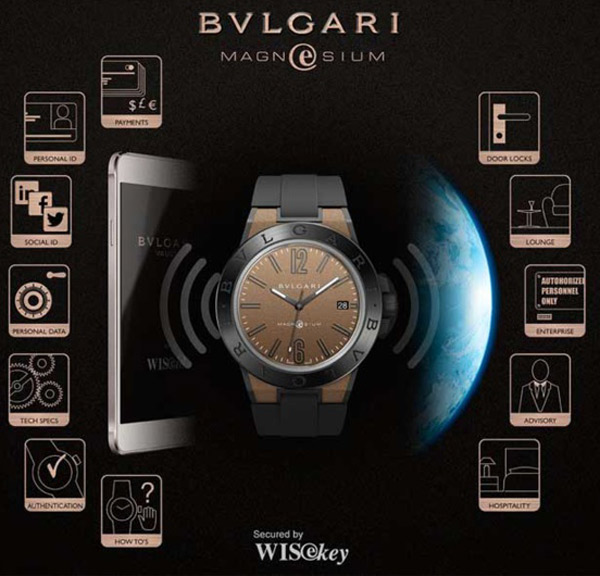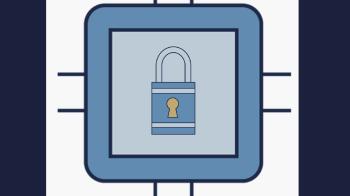Swiss watch brands have been interested in the possibilities of electronic authentication for around a decade. The first to embrace the possibilities of digital authentication was Rolex, who installed a system for ID verification of its personnel. It quickly became apparent, however, that the same technology used to identify people could also be used to identify watches. As a result, the first implementations of this technology for watches took the same form: a cryptographic key on a credit-card sized card. The first public application was announced at Baselworld in 2010. Hublot partnered with WISeKey, a Swiss cybersecurity company, to present an electronic guarantee. Each watch leaving the factory was accompanied by a chip card, with the chip being activated once the watch left the factory. Once the watch was sold by a retailer, a second interaction with the chip automatically activated the guarantee.

It may only have been 10 years ago, but the quote from Carlos Moreira, CEO of WISeKey, at the time is telling: “We needed a brand like Hublot, which is sensitive to technology, to develop such as system. The majority of brands present at Baselworld don’t want anything to do with the internet!”. Given Jean-Claude Biver’s vision, it was hardly surprising that this card, supplied with its own reader, became the entry ticket for the “Hublotista”, a special club for Hublot owners which has amassed over a huge number of members over the past 10 years.
Other brands, like HYT, have since followed Hublot’s lead. But Bulgari took things a step further when it partnered with WISeKey in 2015. For the first time, the cryptographic chip and the NFC (near field communication) antenna were integrated into the watch itself as demonstrated in BaselWorld 2015. The Bulgari Diagono in magnesium thus replaced the credit card for access, not to the warranty, but to the Bulgari Vault, in which owners could store sensitive information in a data centre “buried in a Swiss military bunker, somewhere in the Alps”. In the meantime, WISeKey had acquired a company that made microchips and became the only company in the world with the capacity to offer both the microchip and the security embedded.

The next big thing comes this year with the integration of blockchain technology for the first time. Working in partnership with all the members from the WISeAuthentic client ecosystem, such as Hublot, Bulgari and Favre-Leuba, WISeKey offers the first implementation of the distributed ledger principle to watch authentication. “We’d have as well a digital certificate that is stored in a distributed ledger rather than just in the brand’s database,” explains Carlos Moreira. In addition to reducing costs, the distributed ledger also makes the information potentially available to many different stakeholders, including third parties such as law enforcement agencies.
WISeKey makes two significant contributions to the partnership: first, it brings the identification that can be tied to the blockchain. On its own, the blockchain merely records individual transactions, whereas WISeKey adds the identification that allows a watch to be authenticated (e.g. to confirm that a watch was sold by an authorized retailer or that a person selling the watch is its legitimate owner according to the ledger). Second, and no less significant, is the fact that WISeKey is using a private blockchain, which can operate much faster than public implementations, which can only handle a small amount of transactions per second.
The perennial problem of counterfeit watches, coupled with the more recent focus on so-called “flippers” in the industry, makes such technology all the more relevant. Expect more brands to adopt it in the very near future.
WISeAuthentic combined with WISeAI connectors may substantially leverage the data collected by AI solutions such as the IBM Watson cognitive system that learns from, and infuses intelligence into the physical world. Watches manufacturers can use the power of Watson to build specialized, integrated solutions to predict and solve their business challenges.








